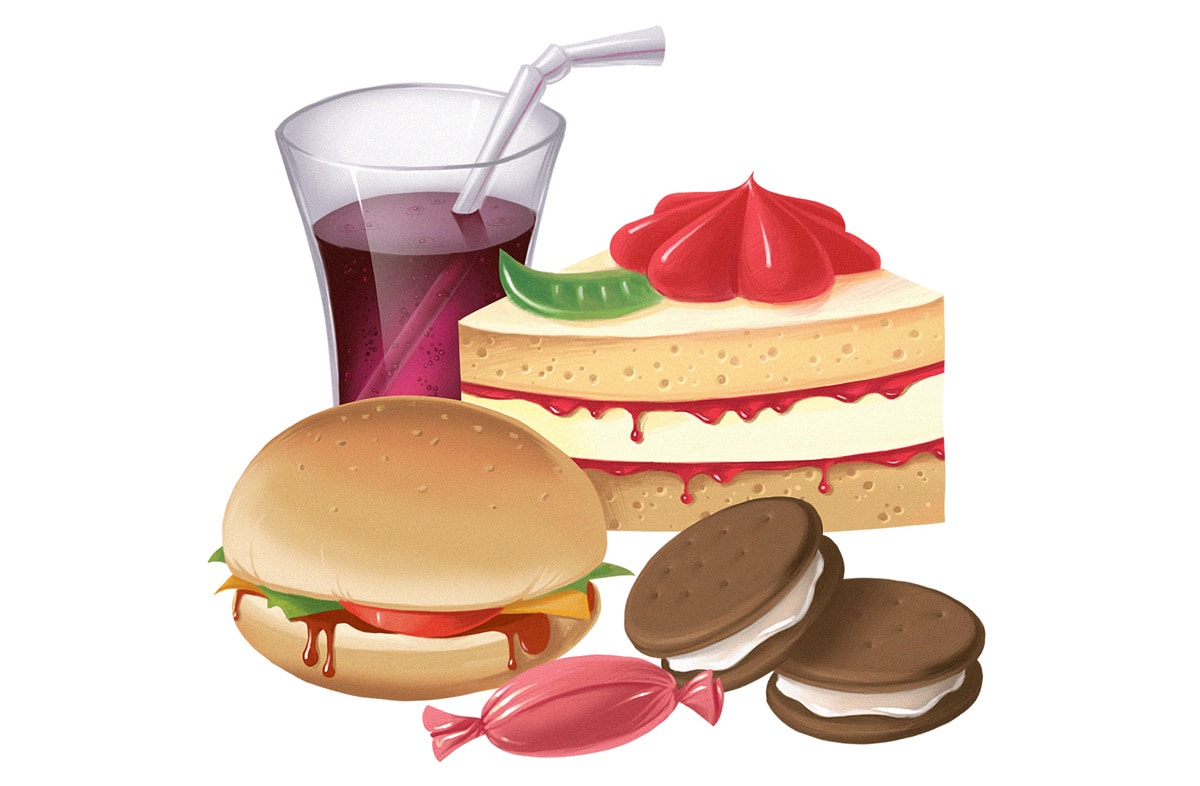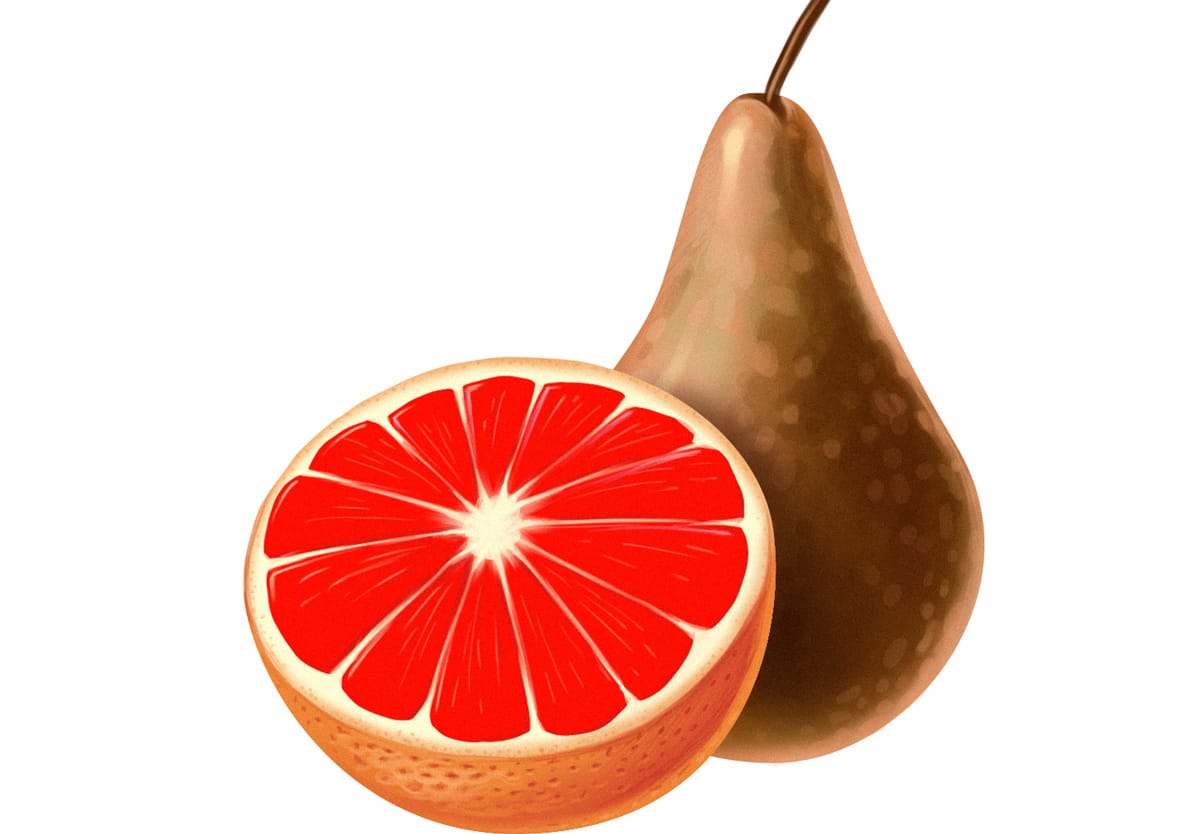
Picture life as a hunter-gatherer. It’s late fall and the leaves are almost gone. The wind at night is starting to howl and the cold bites at your fingers and toes every time you go out. It’s going to be a hard winter, and the larder is going to get pretty bare before it’s over.
Wouldn’t it be great in that situation to have a little bit of extra fat stored? Wouldn’t it be handy, say, if you could take advantage of the late-summer fruit bounty to conveniently stockpile some energy reserves for the winter?
Luckily for hypothetical caveman-you, humans do have genetic adaptations to do exactly that. Before we had fridges, dehydrators, or other forms of long-term food storage, it was an easy and portable way to store some extra energy for the lean months. But those same adaptations aren’t so great for real-world, 21st-century you, because you don’t have a looming famine every winter and don’t need to stockpile fat for anything.
This is the story of one genetic adaptation that helped us out during periods of food scarcity in the Paleolithic - and how today that once-useful adaptation is contributing to higher rates of obesity, hypertension, gout, and metabolic disease. And of course, how you can use all this information to stay healthy without having to set up a “famine” for yourself every winter.
Uricase: the enzyme you never knew you were missing
It all starts with uricase. Uricase is an enzyme that breaks down a compound called uric acid.
Before humans even existed, during the miocene era (about 17 million years ago), our primate ancestors lost the gene for producing uricase. Because these apes didn’t make uricase any longer, they weren’t breaking down uric acid as efficiently, so the the amount of uric acid in their blood went up. Mammals with functional uricase genes have a blood uric acid level of 1-2 mg/dl, but in apes (and their descendants - that’s you!), uric acid levels can rise up to 10 mg/dl, or even higher.
This was actually really great for the apes, and for a long time, it was great for the humans who inherited their genes:
- Having more uric acid allowed fruit-eating apes to rapidly transform fructose into body fat so they could store up some extra padding for the winter.
- Having more uric acid also allowed our primate ancestors to avoid low blood pressure during periods of scarcity or metabolic stress. Low blood pressure can be dangerous, and uric acid lets us maintain our blood pressure even if there isn’t a lot of salt available - which there wasn’t, at the time.

All of this was just perfect in the Miocene. It was even great later on, in the Paleolithic. Having lots of uric acid in our blood let us store more fat for the winter and keep our blood pressure high enough, both of which were huge survival advantages at the time. (This review is free to read and goes over everything in a lot more detail, if you’re interested.)
But today, we don’t have any trouble getting enough calories to last through the winter, and we certainly don’t have a salt deficiency in our diets. In fact, most people have exactly the opposite problems. With fructose-sweetened candy and soft drinks easily and cheaply available all year round, the last thing we need to do is efficiently store fructose as fat. And with over-salted processed food everywhere, nobody needs a genetic mutation that raises their blood pressure in response to minimal amounts of sodium.
Having a lot of uric acid used to be great, but in the modern food environment, it’s totally counterproductive. This paper goes over all the ways that our super-high uric acid levels cause us problems in a fructose-rich, salt-rich food environment. A quick summary:
| Problem | Explanation |
| Gout | Uric acid can crystallize into monosodium urate crystals in the joints, causing pain. |
| Kidney stones | When uric acid crystallizes in the kidneys, it forms kidney stones. |
| High blood pressure | Uric acid affects hormones responsible for blood pressure regulation, prevents the synthesis of nitric oxide (which reduces blood pressure), and damages blood vessels. |
| Metabolic syndrome (obesity/Type 2 diabetes/insulin resistance) | Uric acid reduces the amount of glucose that your muscles take up and causes inflammatory changes in fat cells that drive more weight gain. |
(It’s important to note here that uric acid is not the only cause of obesity, hypertension, diabetes, or kidney stones. It’s a contributing factor, but nobody is claiming that it’s the One True Cause of Obesity and Metabolic Disease).
You & your uricase deficiency (& your diet)
Now for the practical part: given that we all have a (relatively) high amount of uric acid, what can we do about it?
The good news: just a lack of uricase on its own doesn’t cause any issues. Humans have never made uricase - literally, from the beginning of our evolutionary history, we’ve lacked the gene to make it. But obesity and hypertension and gout are all relatively new problems, at least on the scale that we have them today. The problem isn’t just uric acid. It’s uric acid + modern diet/lifestyle factors. And the diet/lifestyle half of that equation is definitely something you can fix.
Don’t make more uric acid than necessary
If uric acid is counterproductive in the modern food environment, the last thing you want is more of it than necessary. This is something you can control with diet.
Humans have relatively high uric acid levels, but some of us have more uric acid than others. Healthy hunter-gatherer populations, like the Yanomami Indians of the Amazon River basin, have uric acid levels of 2-4 mg/dl (and rarely suffer from “diseases of civilization” like gout, hypertension, and obesity). By contrast, people in industrialized countries, like the US, have uric acid levels of 5.5-6 mg/dl. Patients with obesity have higher levels of uric acid than non-obese people.
One key dietary factor here is fructose. Because of the way that fructose is metabolized, eating a lot of fructose produces a lot of uric acid...which then makes it easier to turn all that fructose into fat. One way to keep your uric acid levels under control is to limit the amount of fructose in your diet. Don’t drink soft drinks. Don’t use high-fructose corn syrup in your cooking. Don’t eat lots of candy. This isn’t rocket science!
Meat and animal foods have also been blamed for causing high uric acid levels, but we covered here how this probably isn’t a big deal.
Humans already have trouble breaking down uric acid, but you don’t have to make the problem worse by eating a lot of fructose.
Eat vitamin C like the uricase knockout you are

Uricase isn’t the only thing that humans can’t make. We also lack the ability to make ascorbic acid (vitamin C). So we have to get our vitamin C from diet - and it turns out that vitamin C is critical to controlling our uric acid issues.
As, this study explains, vitamin C helps reduce the undesirable effects of uric acid, especially the cardiovascular effects. Foods that are rich in vitamin C and very low in fructose include bell peppers and cauliflower, but almost all vegetables have at least some. Raw is better for vitamin C, because cooking destroys some of the vitamin.
It’s worth noting that the major source of fructose found in nature, is fruit, which comes packaged with lots of vitamin C included. This is one reason why fruit doesn’t fall into the same category of “fructose-rich junk food” as Coke and other kinds of sugar, which are usually totally devoid of vitamins.
In conclusion: you’re designed to gain fat, but you don’t have to roll with it.
As a species, humans are well-designed for easy weight gain. Not having the uricase gene is just one of the biological factors that makes us susceptible to gaining fat - which used to be a survival advantage, but definitely isn’t today.
When all that biology collides with the modern food environment, we get sick. And since we can’t do anything about the genetic side, we’ve got to deal with it on the food end. Avoiding excessive fructose and eating vitamin C-rich foods is a good start for modern cavemen and women who want to avoid gout, hypertension, weight gain, and all the other problems of sky-high uric acid levels.





Leave a Reply